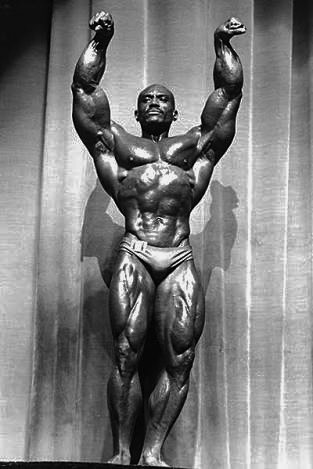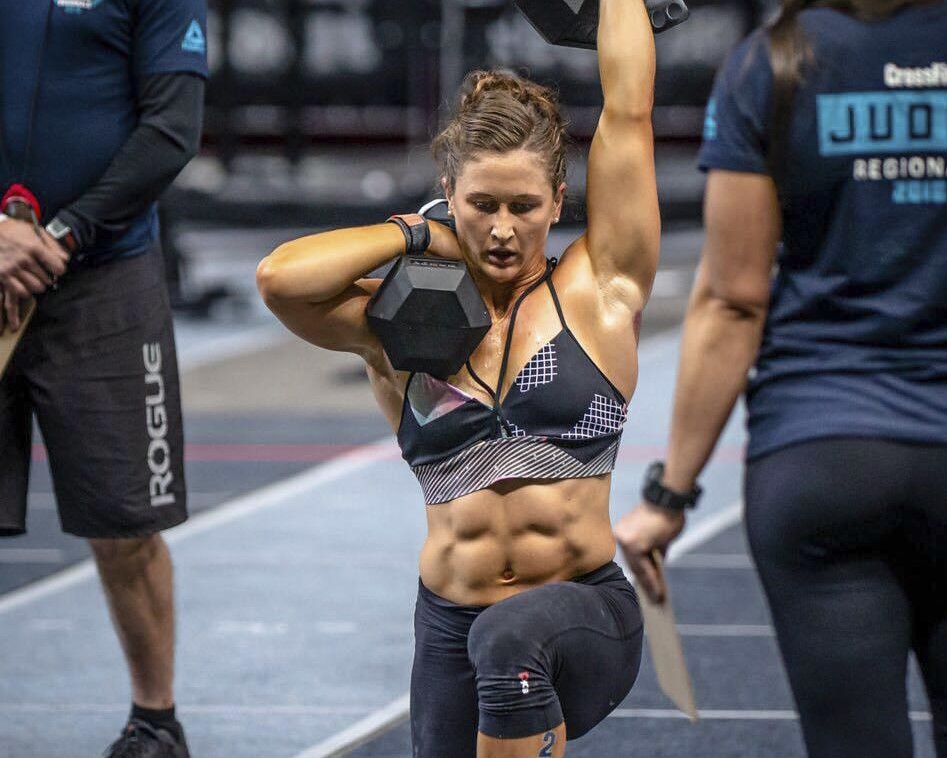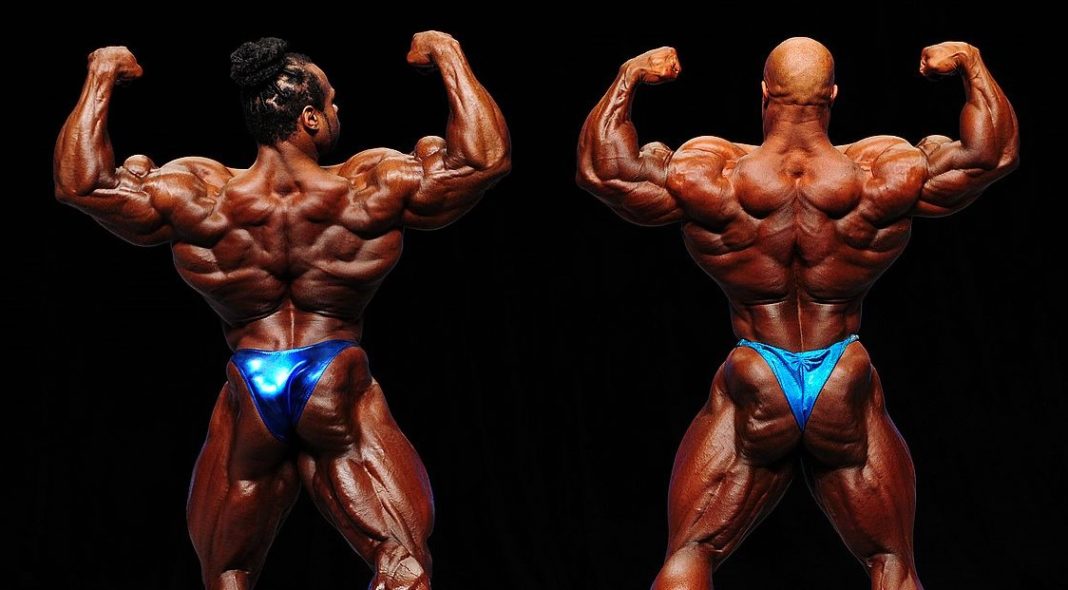Kai Greene vs. Phil Heath, 2012 Mr. Olympia
As we prepare to move into the ’20s, let’s look back at the decade that was and highlight the top bodybuilding, strength, and fitness stories. Many worthy contenders failed to make the cut, from Jay Cutler retiring to Dexter Jackson not; powerlifting and weightlifting world records falling; the hype of pre-workout supplements; the ubiquity of Quest and other protein bars; the breakup of the IFBB and its Pro League; Adela Garcia winning her eighth Fitness Olympia and Iris Kyle winning her tenth Ms. O; a bunch of new Olympia champs, including Mr. O’s #14 (Shawn Rhoden) and #15 (Brandon Curry); and the deaths of numerous legends not mentioned below, including Serge Nubret, Casey Viator, Terry Todd, and Nasser El Sonbaty. Our top 13 aren’t ranked by importance but are listed in some rough approximation of chronological order. Farewell to the ’10s, bring on the ’20s!
PHIL HEATH WINS SEVEN SANDOWS
The Gift dominated the decade. Phil Heath won seven consecutive Mr. Olympias from 2011 to 2017 (and was second in 2010 and 2018), a dynasty that leaves him currently one short of the record held jointly by Lee Haney and Ronnie Coleman. How dominant was Heath’s seven string? No other bodybuilder hauled home more than one Sandow trophy over the past 10 years. Heath’s first O win, over Cutler, was, arguably, his best-ever combination of size, shape, and detailing, but his three epic victories over Kai Greene (2012–14) were this era’s most memorable clashes.
THE ROCK RISES
He’s now so ubiquitous, it’s easy to forget that, at the dawn of the decade, Dwayne “The Rock” Johnson had been relegated to Hollywood’s kiddie pool and was on the verge of being booted from even that. Remember Race to Witch Mountain (2009)? What about Tooth Fairy (2010)? But when, in 2011, he joined the fast and furious crew as the badass Hobbs in Furious Five, The Rock began, in haste, to build his status as a worldwide cinematic icon. He’s since co-starred in three more Fast & Furious sequels and a spinoff, and invigorated the Jumanji franchise, too. And there’s Moana, Ballers, Rampage, Skyscraper… He’s the biggest movie star in the world, figuratively and literally, for as his fame and fortune have grown, so have his muscles. What’s more, he regularly features workouts on his Instagram account (166 million followers). By his pervasive global presence, no one did more this decade to promote a bodybuilding lifestyle than The Rock.
THE DEATHS OF THREE MR. OLYMPIAS

Before this decade, everyone who had won the Mr. Olympia (or any Olympia title, male or female), dating back to the initial contest in 1965, was alive. As the decade comes to a close, we’ve lost three of the now 15 Mr. O’s. The first to go was the second winner (1967-69), Sergio Oliva. The Myth, who was bodybuilding’s first mass monster and Arnold Schwarzenegger’s nemesis, died in 2012 at 71. Just 16 months later, in 2014, the original Mr. O (1965-66), Larry Scott died at 75. Scott personified the Cali beach-and-barbells lifestyle on Weider magazine covers in the ’60s. Then, this year, the fourth legend to win the Mr. O (1976, ’81), Franco Columbu, died at 78. Arnold’s best friend, Columbu was celebrated for his great strength as well as his dense physique.
SPORTS SUPPLEMENTS GO MAINSTREAM
The migration had been coming for years, but this was the decade when sports supps moved out of the faltering health food stores and dying muscle magazines and into the mainstream. Now there are protein bar sections and aisles with all manner of workout supps in your local grocery, drug, and big box stores. Amazon sells most every supplement you could name. And you’ll find BCAAs, creatine, and pre-workouts in the lockers of all manner of pro and amateur athletes.
THE NEW DIVISIONS
Women’s bodybuilding branched out into new divisions last decade: fitness, figure, and bikini, with the addition this decade of physique (in 2011) and, recently, wellness. This decade it was men’s bodybuilding that did most of the branching. The 202 division matured into the 212 in 2012. Men’s physique arrived in 2013, followed by classic physique in 2016. All of the new divisions feature smaller musculatures than what is now called open bodybuilding, and the two physique classes emphasize aesthetics: slim waists, a V-taper, pleasing lines. Overall, these new approaches have brought a lot more men to stages, but it remains to be seen in the next decade if too much talent has been leached from open bodybuilding.
THE DEATH OF JOE WEIDER

Beginning in 1940 at age 19, Joe Weider launched his first muscle magazine. For the next six decades, his profile and power grew. He created many more magazines, culminating in the modern era with Muscle & Fitness, Flex, Men’s Fitness, and Shape, as well as innumerable workout products, techniques, courses, and sports supplements, the IFBB (formed with his brother Ben), and the Mr. Olympia. No single person has been more responsible for popularizing weight-training than Joe Weider, with the possible exception of his protégé Arnold Schwarzenegger, whom Weider supported through his earliest years in America. On March 23, 2013, Joe Weider died at age 92.
POWERLIFTING GOES RAW
At the beginning of the decade, powerlifting was still exploring what could be accomplished with multiply suits. Dave Hoff put up a 3000+ pound fully equipped total in 2013, which he broke in 2018. But all the while, there was a reaction by powerlifters and powerlifting fans (usually, one and the same) against super suits. And raw marks became ever more impressive. Benedikt Magnusson’s 1015 raw deadlift (2011) is still greater than any equipped dead. Former equipped world-record-holder Vlad Alhazov became the first person to squat 500kg (1102 lbs.) raw with wraps in 2017 and pushed the record to 525 kg. (1157 lbs.) a year later. This year Ray Williams totaled a world record 2452 in a raw and drug-tested meet, squatting 1080 without wraps. And, more recently, Julius Maddox is rewriting the raw bench press record, pushing up 744 last month. And those are just the superheavyweight men. Up and down the weight classes, men and women alike, the raw record book has been rewritten over the past three years. Who needs a multiply suit—and all the doubters—when guys and gals are crushing records with no-ply?
DESPITE CONTROVERSIES, CROSSFIT THRIVES
Though the first gym opened in 2001, CrossFit had its adolescent growth spurt this decade. In 2008, there were 500 affiliates. In 2012 alone (its best year), it added 3500 more, and it hit 10,000 in 2014. According to the latest estimate, in 2018, there were 15,500 affiliate gyms in 162 countries. Despite controversies regarding its philosophy, injury rate, and social media strategy, CrossFit was the fitness growth story of the ’10s. Four-time men’s CrossFit Games champs Eric Froning, Jr. and Mathew Fraser and three-time women’s champ Tia-Clair Toomey are international sports celebrities, each with more than a million Instagram followers.

FLEX LEWIS GOES UNDEFEATED IN 212
At the dawn of the 212 in 2012, the division was stacked with talent, including David Henry, Eduardo Correa, and Jose Raymond. But one man was destined, like Phil Heath in the open division, to define what it meant to be both “freaky and pretty.” Flex Lewis won the first seven Olympia 212 titles (2012-18) before retiring from the division to move into the open class in 2020. What’s more, he collected another 10 212 titles and was never defeated in the division: 17 wins, 0 losses. The Welsh Dragon’s record of domination may never be topped.
THE FALL OF MAGAZINES & RISE OF SOCIAL MEDIA
Once upon a time, the magazines were the muscle media. It wasn’t like we were going to get bodybuilding results and profiles in USA Today (or Sports Illustrated or ESPN). But the message boards of Web 1.0 wounded magazine readerships. And the interactivity of Web 2.0 all but finished off print over the past 10 years. MuscleMag only temporarily survived the 2012 death of its founder, Robert Kennedy. Powerlifting USA also died in 2012. Flex’s last stand-alone issue appeared in early 2018. Ironman is now a quarterly. Muscle & Fitness and Muscular Development are still hanging on, but are sadly debilitated. For better and worst, bodybuilders and strength athletes now are their own publishers and editors, pumping out YouTube videos and Instagram posts. We know what we’ve lost. We’re not yet entirely certain of what we’ve gained.
STRONGMAN STARS BREAK THROUGH
They’re real-life giants. And they’ve mastered social media—eat big, lift big, have fun. For the longest time, the world’s strongest men were just some Scandinavian dudes heaving heavy things in front of a few dozen confused tourists, always airing on ESPN2 at 3 AM. I can’t get back to sleep. Oh, look, the 2004 WSM is on again. But in recent years, World’s Strongest Men Eddie Hall, Brian Shaw, and Hafþór Björnsson have broke through to the general public. Hall and Shaw are half the cast of the History Channel’s The Strongest Man in History. Björnsson was The Mountain on Game of Thrones. All three strongmen are social media celebrities with over a million Instagram followers. Björnsson has 2.8 million.

THE DEATH OF DALLAS MCCARVER
It still seems shocking. On August 22, 2017, Dallas McCarver died of heart failure. He was 26. Coming off an eighth in the previous year’s Olympia and a second in that year’s Arnold Classic (both when still only 25), the phenom from Tennessee seemed like bodybuilding’s future, a potential Mr. Olympia with a long competitive career ahead. His untimely death made even mainstream news, and its aftershocks continue to rattle the bodybuilding world.
THE SMARTPHONE REVOLUTION
The original iPhone arrived in 2007, but it seems primitive by today’s standards. It was this decade, when high-res still cameras and HD movie cameras became standard smartphone features, that progress shots and training videos flooded Instagram (launched in 2010) and YouTube. Where once it was frowned upon to take your cell into the gym, the smartphone is now a ubiquitous training accessory. From workout soundtracks, to capturing photos and videos of PRs, to getting on-the-fly advice and motivation, the smartphone in the gym is a revolution that has only just begun.

















































